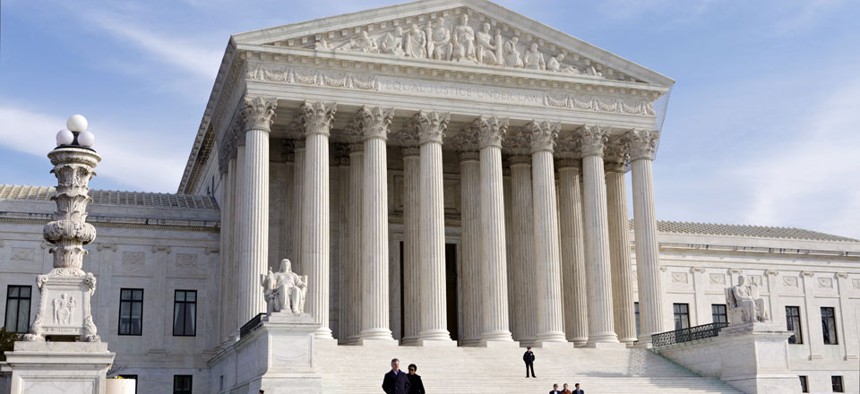49% of the Links Cited in Supreme Court Decisions Are Broken

The U.S. Supreme Court in Washington, DC J. Scott Applewhite/AP File Photo
The flip side of an Internet that is always growing is an Internet that is always changing.
In March of 2001, Timothy Scott, the sheriff's deputy for Coweta County, Georgia, and Victor Harris engaged in a high-speed car chase. Scott had caught Harris, then 19 years old, speeding; Harris got scared and raced away. The two ended up driving -- one in flight, the other in pursuit -- at 90 miles an hour on a two-lane road. It was raining. Harris lost control of his vehicle. Scott's own car slammed into Harris's. Harris was paralyzed in the accident.
You may know the story from there: Harris ended up suing Scott for excessive force, and the case, after years of appeals, wound up tried before the Supreme Court. And one of the pieces of evidence the defense presented was a video, courtesy of a dashboard-mounted camera, that depicted the chase from Scott's point of view. It was, Antonin Scalia remarked during oral argument, “the scariest chase I ever saw since The French Connection.”
The Court found in favor of Scott, and many legal scholars attribute the ruling, in part, to the impact of the video. Which was why the justices linked to the video the digital version of their decision. As Justice Breyer wrote in a concurrence, “I suggest that the interested reader take advantage of the link in the court’s opinion, and watch it."
The interested reader, however, would be unable to do so. The link to the video is broken. Which makes it one of a shockingly large collection of links -- citations, meant to explain and contextualize the decision-making carried out by the highest court in the land -- that have, in the years since they were first linked to, died. According to a new study conducted by Harvard law professor Jonathan Zittrain and his student Kendra Albert, a whopping 49 percent of those links are now broken. Since 1996, the researchers found, justices have cited materials found on the Internet 555 times. And, now, nearly half of those links lead "to nowhere."
In other words, the longstanding problem of link rot -- the eventual disintegration of websites -- is manifesting itself in the documentary dealings of the highest court in the land. As Adam Liptak, writing about the study for The New York Times, puts it: "The modern Supreme Court opinion is increasingly built on sand."





